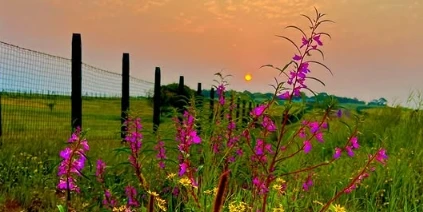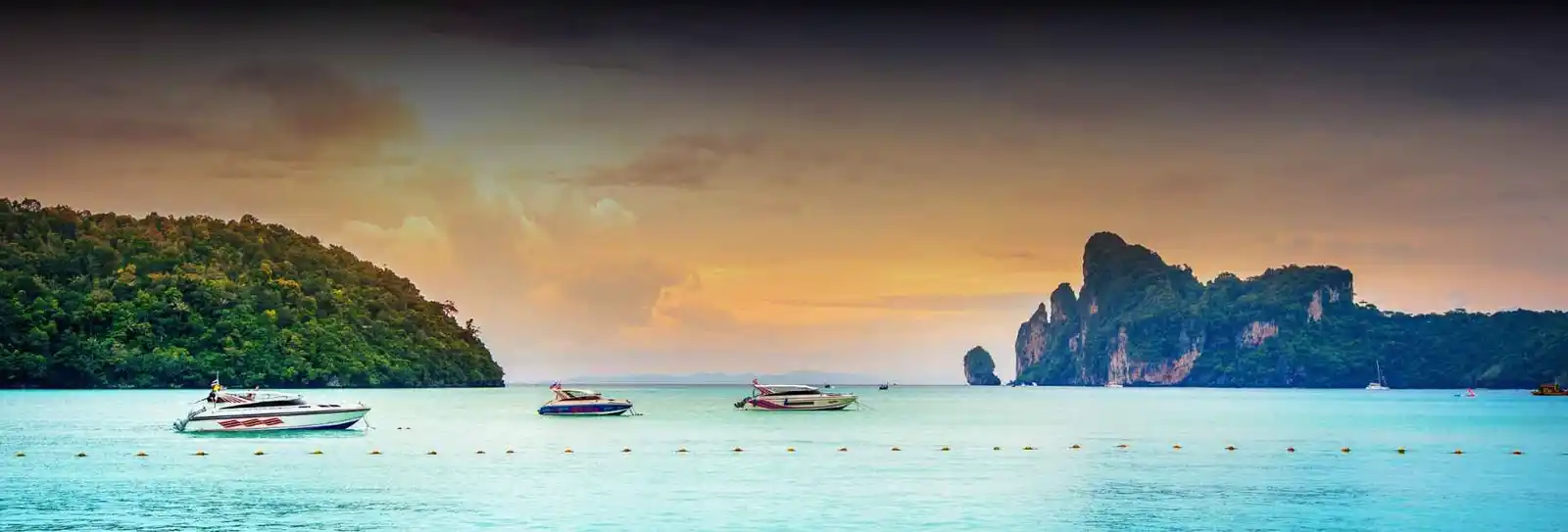
Valley of Flowers Trek is India's most beautiful and enchanting Himalayan trek, which sits at the heart of Uttarakhand's Chamoli district. The meadow of alpine vegetation is a UNESCO World Heritage Site that transforms into a rainbow-hued paradise from July to September, with a dazzling blanket of over 600 varieties of alpine flowers at their peak. Situated within snow-capped mountains and surrounded by the Pushpawati River, the trek boasts the finest mix of natural scenery, religious significance, and ecological uniqueness. The trek from the Govindghat village commences and takes around 38 kilometres round-trip, and normally takes 6 days to reach. The trek has picturesque stopovers at Ghangaria, the Valley of Flowers and Hemkund Sahib base camp, a holy Sikh pilgrimage site. The trail is relatively sloping and is hence very easy to traverse for seasoned trekkers as well as competent freshmen.Trekkers are fortunate enough to get wide views of waterfalls, trees, and dense Himalayan flora and fauna, including the endangered flowers blue poppy, Brahma Kamal, and rare Himalayan birds. Valley of Flowers is not a trek but an expedition into an unspoiled system, and each step one takes one more into a city-less world. The serene atmosphere, complemented by the extraterrestrial landscape, is heaven for nature enthusiasts, horticulturists, photographers, and mystics alike. Since it is a safe national park, camping inside the valley is not allowed, thereby contributing to its sensitive ecosystem. In pursuit of wildflowers, for peace of mind, or for another Himalayan adventure, whatever your reason, the trek guarantees an unforgettable journey into one of nature's most breathtakingly beautiful creations. It's truly a bucket-list hike for people who wish to behold the Indian Himalayas at their full glory and unspoiled best.History of the Valley of Flowers TrekValley of Flowers is centuries old, and it is also deeply rooted in mythology and recent discovery. It is locally referred to as "Phoolon ki Ghati," and the valley has been a holy site for people of Uttarakhand for centuries. It is said that sages and yogis used to visit the valley for meditation and were drawn to the serene ambience and mystical surroundings. It is reported to be the site in Hindu mythology where Hanuman brought back the mythological herb Sanjeevani to bring Lakshmana back to life while waging war during the Ramayana. But the valley was unknown to the world until 1931, when British climber and botanist Frank S. Smythe chanced upon it while returning from the successful climb of Mount Kamet. Enchanted by its brilliant floral riches, Smythe documented his trip in his "The Valley of Flowers," the book that was soon to make this Himalayan treasurehouse famous.His discovery inspired even more scientists and nature enthusiasts from all over the world, and the valley soon found itself mapped on the globe as a region of scientific and ecological study. Awarded its own natural beauty and ecological status, the Valley of Flowers was announced as a national park by the Government of India in 1982. Only in 2005 was it awarded the UNESCO World Heritage Site status, as part of the Nanda Devi Biosphere Reserve. A highly protected zone with overnight camping within the valley prohibited, it now protects its sensitive biodiversity. This Trek, every bit as much a nameplate on the board for nature's marvels as any, is also an entry into a land steeped in cultural heritage, scientific folklore, and preservation tradition. The combination of myth and legend isn't so much an attractive hike as a stroll along a living, breathing chunk of Himalayan heritage.👉 Looking for a thrilling Himalayan Trek from Bangalore? Don’t miss the chance to experience the Valley of flowers trek with Escape2Explore. This guided adventure offers scenic trails, an ancient fort, and breathtaking sunrise views — perfect for weekend getaways and nature lovers.Places to see around the Valley of Flowers TrekHemkund Sahib: Situated at an elevation of 4,329 meters, Hemkund Sahib is a Sikh holy pilgrimage site and one of the most important Gurudwaras in the world. Situated amidst seven snow peaks and a glacial lake, the place is holy. The pilgrims and tourists are drawn towards its peace and quietude that the location offers. The 6 km trek ascent from Ghangaria to Hemkund is physically demanding but spiritually rewarding.Ghangaria Village: Ghangaria is the final human habitation while climbing to Hemkund Sahib and the Valley of Flowers. It is at 3,050 meters above sea level and is both trail base camps' starting point. There is accommodation, dining, and medical assistance in a village with only plain facilities. Surrounded by dense woods as far as there is water available on all sides, as waterfalls, it is a peaceful ground of acclimatisation and relaxation. About 25 km short of Govindghat is Badrinath, one of the Hindu Char Dham temples. Between the Nar and Narayan mountains is the Lord Vishnu temple, which gets thousands of pilgrims annually. Scenery and hot springs are the attractions, and it's an eye- and culture-enriching addition to your trek.Mana Village: Only 3 km from Badrinath, Mana is the last village in India to the Indo-Tibetan frontier. "India's Last Village," Mana is where one can bask in a different cultural setting with a peek at ancient Himalayan architecture and mythology. Bhim Pul, Sarawati River, and Vyas Gufa (cave) are some places with Mahabharata mythological significance.Best Time to Visit the Valley of Flowers TrekJuly to mid-August: It is the peak and ideal time to see the Valley of Flowers. Monsoon rains revive the valley during this period, resulting in a picturesque flowering of over 600 species of wild flowers. The entire area becomes a kaleidoscope of colours, a pink, purple, yellow, red, and white-pigmented carpet, when beautiful Himalayan flowers like blue poppies, cobra lilies, and Brahma Kamal bloom. The weather is foggy, the air is chilly and aromatic, and the valley is most romantic and scenic. This is the prime time for botanists, photographers, and nature lovers who want to witness the whole flowering spectacle.Mid-August to Early September: Although the monsoon begins receding, the Valley of Flowers continues to buzz with flowers, and some of the flowers that had come early into bloom begin to whither away. The plus of trekking at this time is improved weather, less rain, clearer blue and improved sights of the snow-capped peaks bordering the valley. The paths are less slippery and the walk more comfortable, so to speak. It's best for those who would love an equal dose of floral beauty and Himalayan scenery, but without as much of a crowd.Snow Melt & Pre-Bloom Charm Late June: Late June is when the Valley of Flowers opens after being snow-bound for months. Although flowers are still to be witnessed in all their glory, trekkers can catch glimpses of green meadows, melting snow patches, and turbulent brooks. It is a better time for individuals who would want to have fewer crowds and camera crews to enjoy the pristine, virgin beauty of the valley before the tourism season. A few flowers, however, are still inaccessible.How to Reach the Valley of Flowers TrekBy Flight: The closest airport to Valley of Flowers is Jolly Grant Airport at Dehradun, 270 km from Govindghat. Routine flight connectivity of the airport is to Delhi, Mumbai, and Bengaluru cities. A taxi or a bus can be booked from the airport for Govindghat, which will cover a 10–12 hour road journey. Joshimath night stay is recommended in case of late arrival.By Train: The nearest railway station is Rishikesh Railway Station, located around 260 km from Govindghat. Rishikesh has regular trains connected to all Indian cities. It is possible to take the bus or hire a shared/private taxi from Rishikesh to Govindghat. It takes around 10–11 hours via scenic towns like Devprayag, Rudraprayag, and Joshimath.By Road: Govindghat is very well road-connected to Rishikesh, Haridwar, Dehradun, and other larger towns of Uttarakhand. The route is run by direct buses and taxis, though the route can be a long, winding one because of the mountain roads. Trekking or a short drive from Govindghat is necessary to Pulna, the head of the trek. The trek continues further to Ghangaria, the base village of the Valley of Flowers and Hemkund Sahib.Why Book with escape2exploreWhen exploring the Valley of Flowers Trek from Bengaluru and beyond, escape2explore stands out as a trusted name in adventure and experiential travel. Here’s why hundreds of travellers choose us for their getaways:Trusted, Well-Reviewed Local Operator: escape2explore has gained the trust of thousands of content tourists all over India. With persistent positive feedback and an unblemished reputation for delivering quality experiences, we assure you that your experience will be hassle-free, memorable, and value-packed. Our insider local knowledge guarantees that you will always be in safe hands.Seasoned Guides: Our trips are led by friendly, trained, and professional guides who are passionate about the outdoors and your safety. Whether it's a beach trek, a cultural tour, or a spiritual walk through temples, our team knows the terrain, the stories, and how to make each moment count.Safe & Curated Itineraries: Your safety is our number one priority. Our tour packages are thoughtfully crafted with safety measures, researched accommodations, and easy travel arrangements. We take care of the details so you can have the experience hassle-free and worry-free.Unique Experience That You Won't Find Anywhere Else: With escape2explore, you discover more than the tourist attractions. We go off the beaten track with hidden beaches, unusual treks, offbeat cultural destinations, and true interactions.Read: High Altitude Trekking|Guide for Trekkers|Trips in India | Kerala backwater|Solo Travel India


